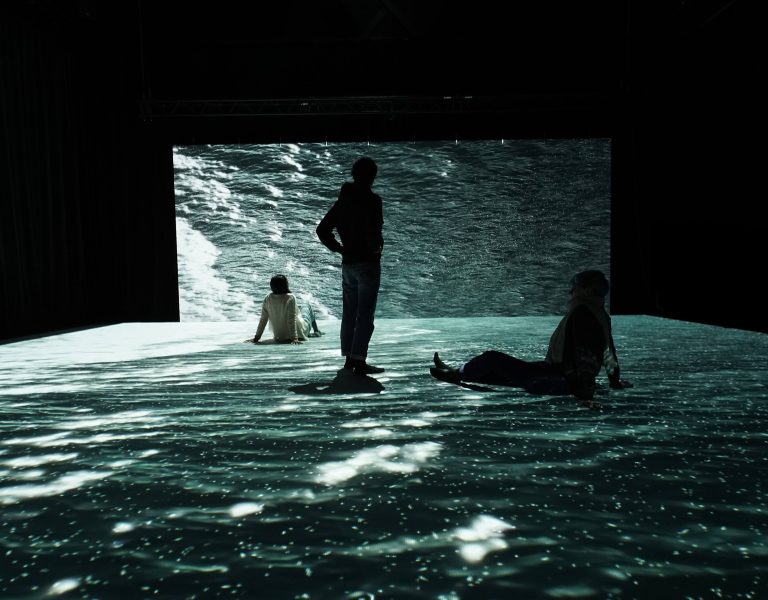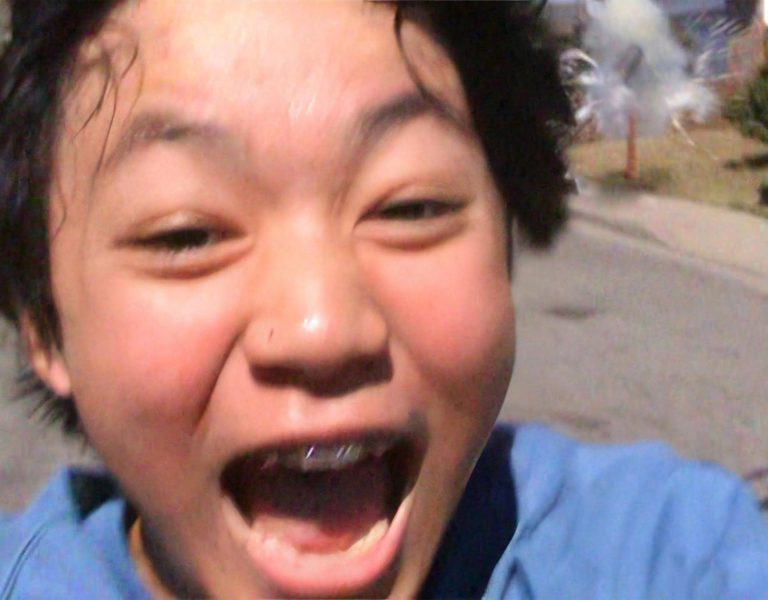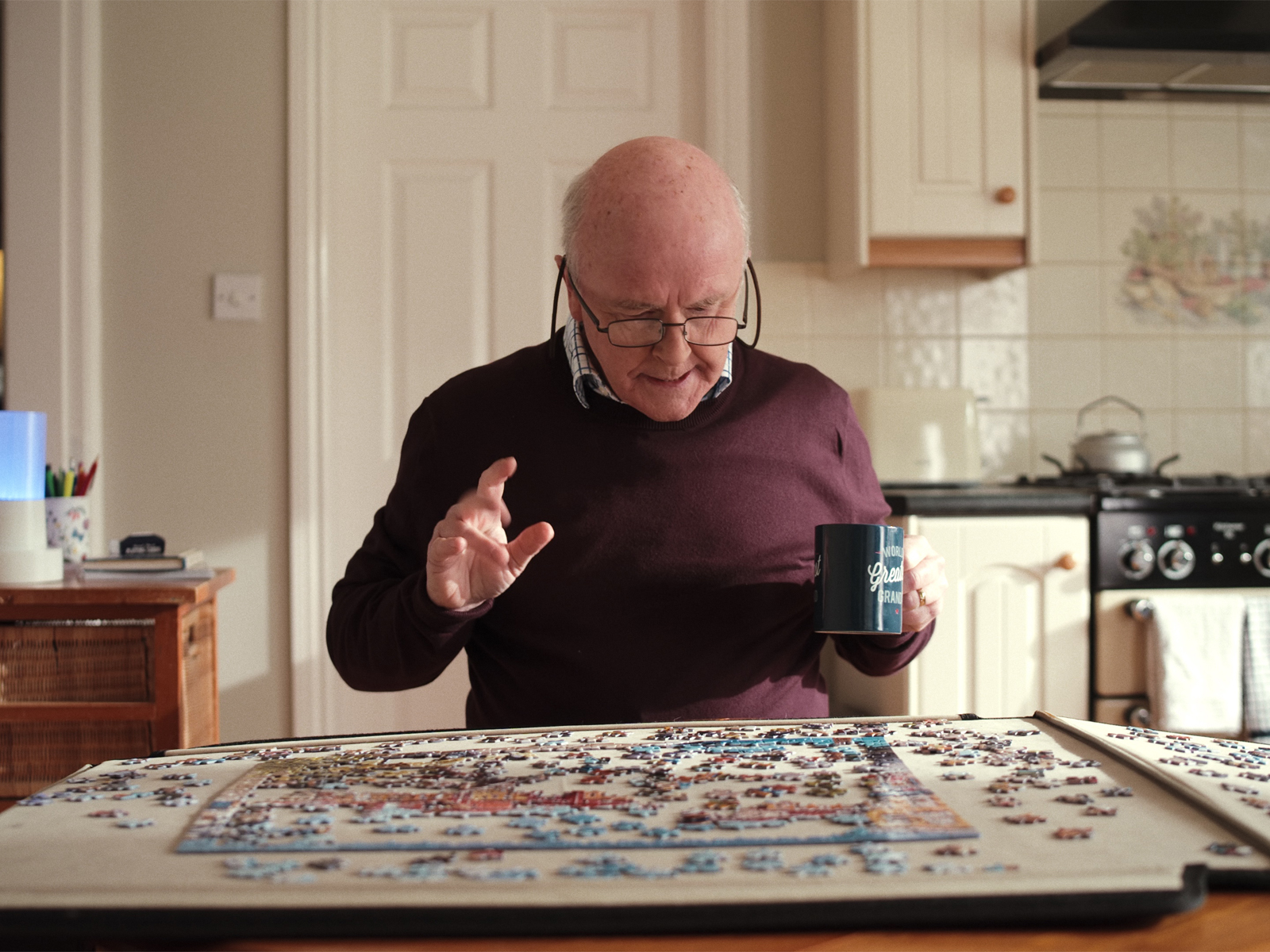
Words: Andrew Alderslade
–
One-hour specials and theatre adaptations to television are rare these days, so it was exciting to get to shoot Isla for BBC 4.
The original play had been produced by Theatre Clwyd and directed by Tamara Harvey who took on the challenge of bringing to television the unique story of Roger, a retiree in lockdown whose daughter gives him a virtual assistant ‘Isla’ to help regulate his life in isolation. A sweet relationship builds between Roger and the Isla, until the strain of lockdown causes havoc and various dark twists take place.
Prep started in a fever, literally for me, as I caught Covid and had to think (with a rather fuzzy brain) how to bring the play’s challenges to the screen and on a very tight budget. One of Tamara’s first references was Little Miss Sunshine, a perfect starting point considering the story is set in the first national lockdown, which was incredibly sunny despite being such an unsettling time. Tamara was also incredibly open minded, embracing a wide variety of references including looking at Orson Welles for deep staging, the HAL sequences of Kubrick’s 2001 and the work of Joe Dante (Gremlins, Innerspace), which I felt had a sense of irony with fantasy similar to the play. They also gave us inspiration on how to bring the non-anthropomorphic Isla to life, especially using Dutch-angles and split-diopters.
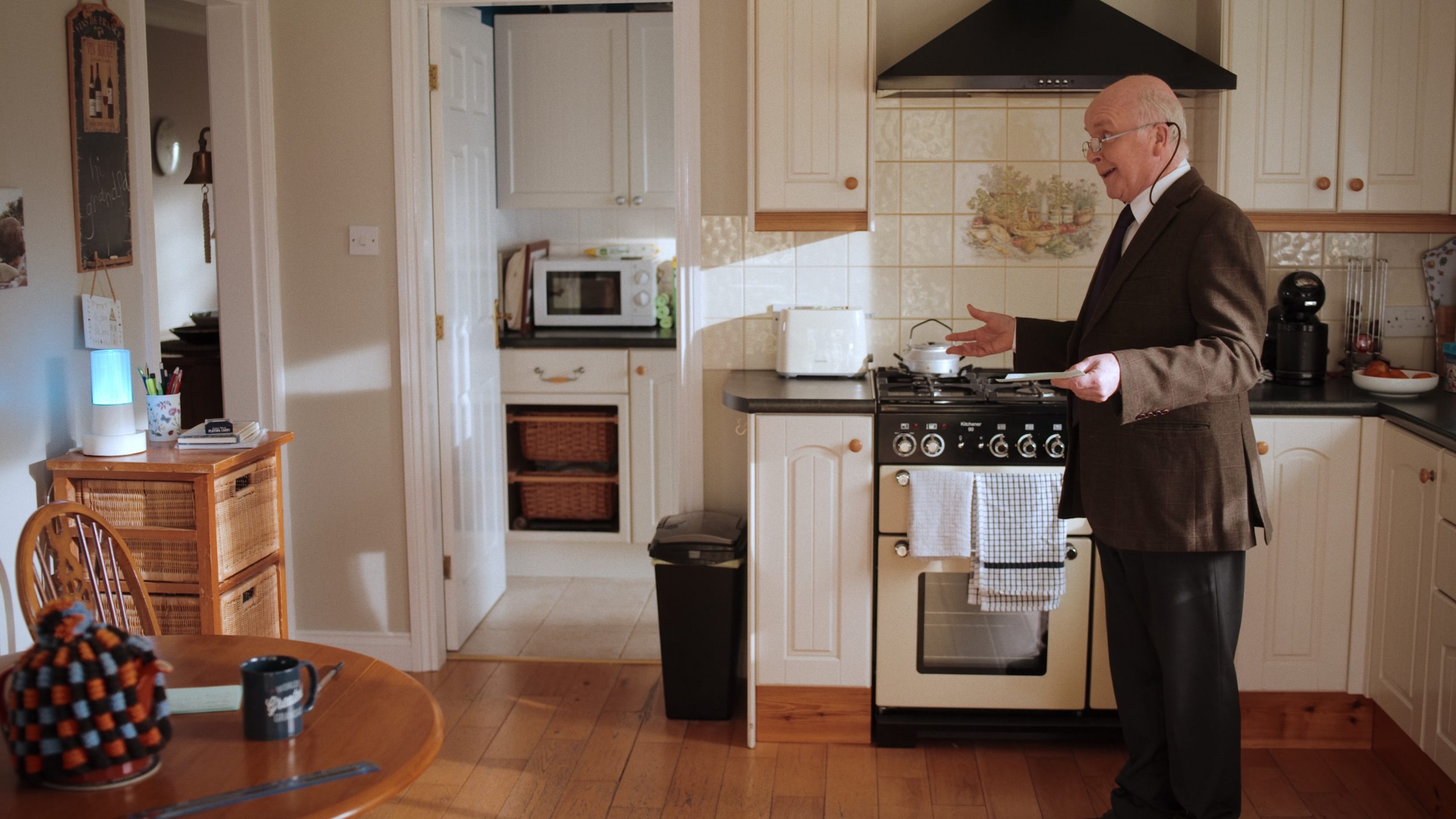
Another source of inspiration was news photography from the lockdowns, particularly those of elderly people sitting alone, images we ended up recreating.
Isla producer Cliff Jones and Rondo Media brought in their regular team and facilities to film on location in Llandudno, North Wales. Using one of Rondo’s Sony FX9. I was keen to bring the sunny filmic look referenced right onto the set, so I sought out a LUT for the FX9 and eventually settled on one made by DP Joel Famularo based on the classic Kodak Eastman 5247 film stock, great for lighting warm sunny interiors to.
For lenses, we used my personal set of Cintek Celere mostly sticking to the middle end of the range, the 25mm, 36mm to 50mm, perfect for some of the deep staging we enjoyed from our references. Filter wise, we always shot with a 1/8 Tiffen Glimmerglass on, with the exception of more abstract scenes and then increased to a stronger factor of 1 or 2. They were provided by Movietech, as were the split-diopters. At first, I worried we would struggle for time to use the split-diopters, but we quickly became very fast at setting them up and they were fantastic for visualising the relationship dynamic, allowing Isla to fill the frame against Roger.
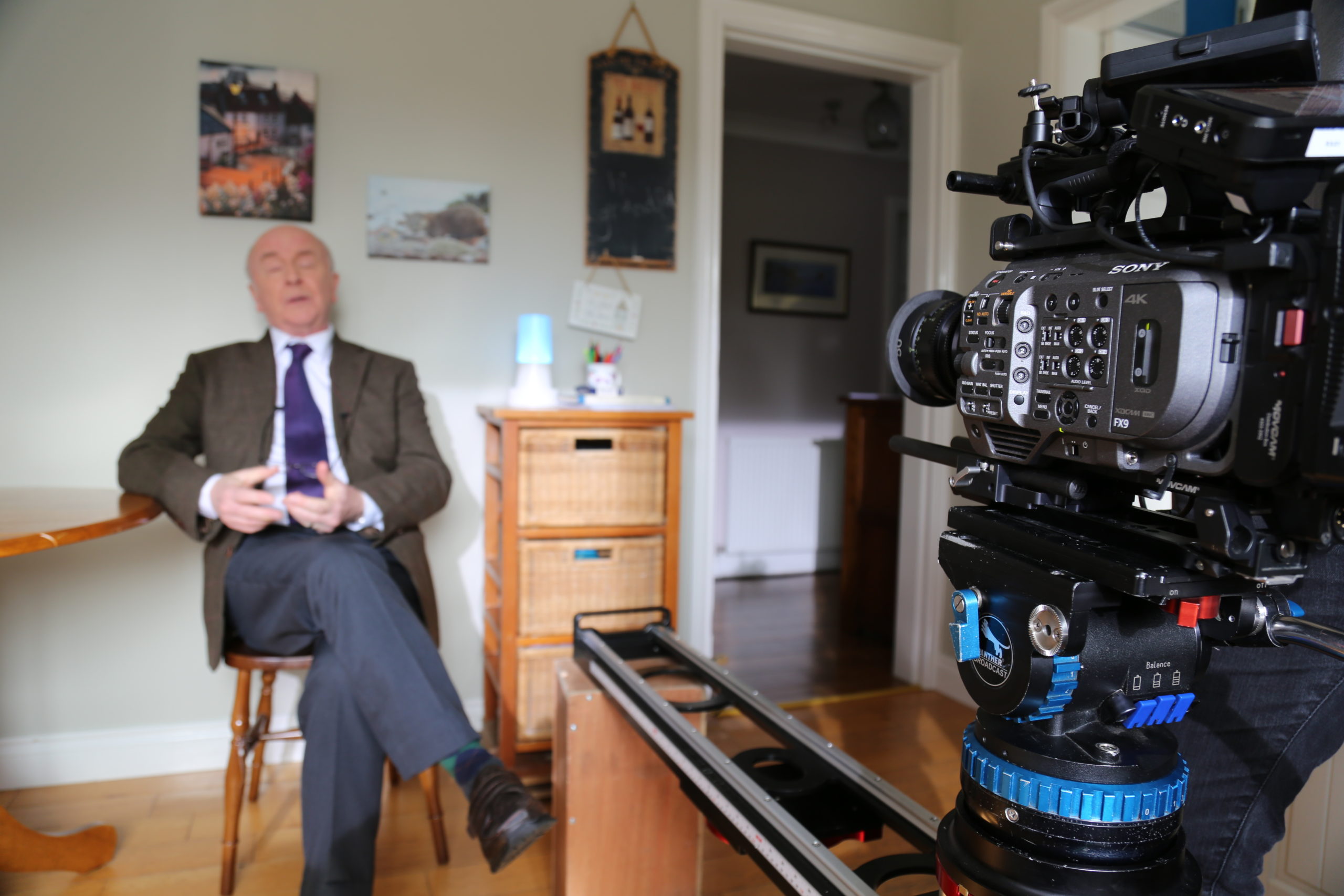
The schedule was tight but we needed the camera to move, and though at times we had a dolly and jib, one DIY technique that worked for us was using an old tripod-dolly (literally dug out my shed) and used with PVC pipes. The main location had excellent floors, so it was fast placing them, occasionally cutting them down. The simplicity allowed actors and myself to easily walk over them and through narrow doorways – DIY methods often raise eyebrows but they allowed us to achieve what we needed.
During the story, Isla turns the lights and appliances in the house against Roger. For the play Theatre Clwyd had made various puppet appliances (including an actual remote-control walking washing machine). However, the house during filming was a real location and had not been wired up for our needs so we hired in Astera NYX bulb kit from Greenkit for wireless control. Gaffer Rhys Edwards who provided the rest of our lighting kit was so impressed, he purchased some Asteras during the shoot.

Bringing a play to the screen comes with very specific challenges, particularly when adopting the same styles used. For Isla this included extensive overlapping dialogue and long scenes (often over ten pages) with highly animated blocking. Luckily our techniques including using the PVC piping allowed us to push through for needed coverage. It was tricky maintaining consistent light and mood throughout long scenes on location, however Gaffer Rhys Edwards had many ideas to adapt to the changing North Wales weather and Rondo colourist Tristan Lewis was able to make necessary adjustments in the grade.
Rondo media utilises a method for shooting drama very similar to the old-fashioned system of only printing selected takes. On set Tamara would choose a take and only that take would be sent to the editor for assembly, with the rest of the rushes available for later access. This would allow us to watch edits of scenes very quickly and was critical in the adaptation process. If we needed more close-ups or ‘illustrative’ shots we knew we had to pick them up, very helpful even if it did create more shots and pressure on a very tight schedule!
Isla is broadcast on BBC4 at 9pm on 12th June.










